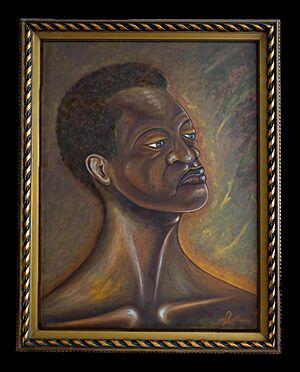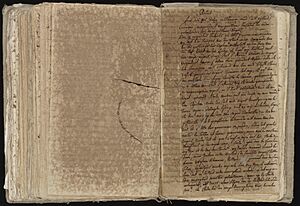Tula (Curaçao) facts for kids
Quick facts for kids
Tula
|
|
|---|---|

Modern artist impression of Tula
by Edsel Selberie |
|
| Died | 3 October 1795 Curaçao, Dutch West Indies
|
| Cause of death | Execution by torture |
| Monuments | Tula Monument on the south coast of Curaçao |
| Known for | Leading the Curaçao Slave Revolt of 1795 |
Tula (died October 3, 1795) was a brave African man. He was enslaved on the island of Curaçao. This island was part of the Dutch West Indies a long time ago. Tula became a leader and fought for freedom. He led a big revolt of enslaved people in 1795. This fight lasted for over a month. Today, people in Curaçao remember Tula as a hero. He stood up for human rights and independence.
The Tula Museum is a special place. It teaches visitors about Tula and his revolt. The museum is located at the Knip Plantation. This is where the revolt first began.
The film Tula: The Revolt (2013) tells Tula's life story. It shows his fight for freedom.
Contents
The Fight for Freedom
How the Revolt Started
On August 17, 1795, Tula decided he would not go to work. He believed he and others deserved to be free. About 40 to 50 enslaved people joined him. They went to their owner, Caspar Lodewijk Van Uytrecht. They wanted to ask for their freedom.
Van Uytrecht told them to go to the governor. The governor was in Willemstad. Tula and his group then left to tell their story there.
Growing the Movement
The group moved across the island. They visited many plantations. These included Lagún, Santa Cruz, and Porto Marie. More and more enslaved people joined them.
They freed others who were held captive. Soon, Tula's group grew very large. It had about two thousand people.
Trying to Stop the Revolt
The Colonial Council tried to stop the rebellion. They wanted the enslaved people to return to the plantations. They tried to talk and make a deal.
Several people were sent to speak with Tula. He was the leader of the revolt. These people then wrote reports about their meetings.
Learning About Tula
Historical Records
Most of what we know about Tula comes from these "white" sources. One person who spoke with Tula was Father Jacobus Schinck. He was a Franciscan priest.
These important documents are kept safe. They are at the National Archives in the Netherlands. They include records of Tula's capture. They also describe his questioning and his harsh punishment.
Remembering Tula Today
Tula is a very important figure in Curaçao's history. He is seen as a symbol of courage. He fought for freedom and human rights. His actions led to important changes.
He reminds everyone about the importance of standing up for what is right. His legacy continues to inspire people.
See also
- Maria (rebel leader)



